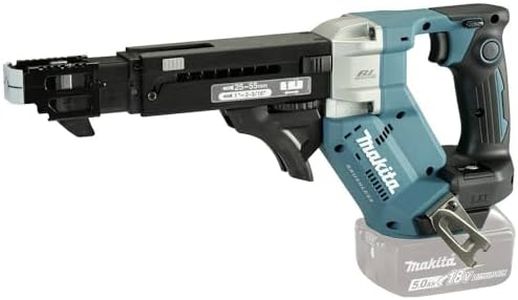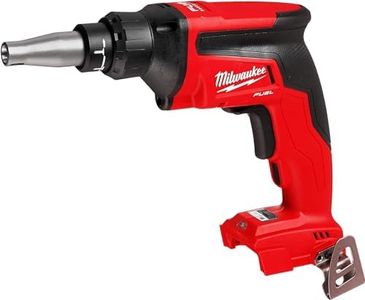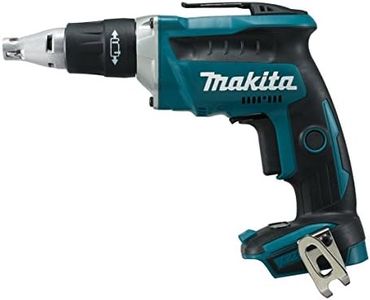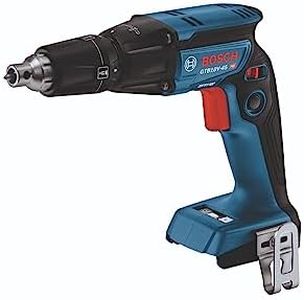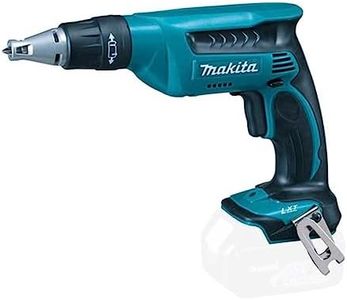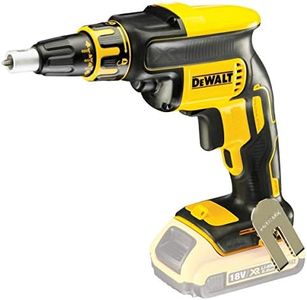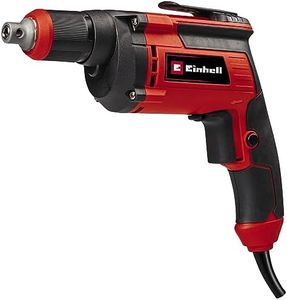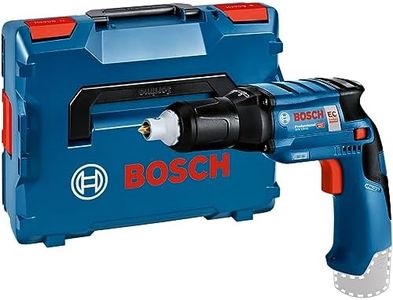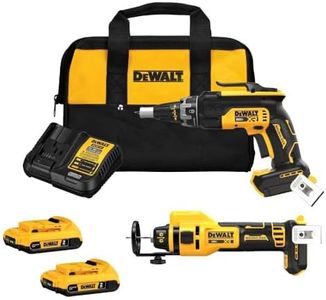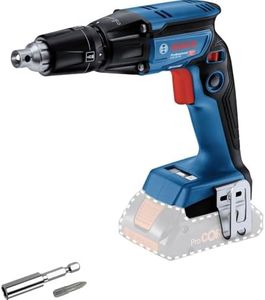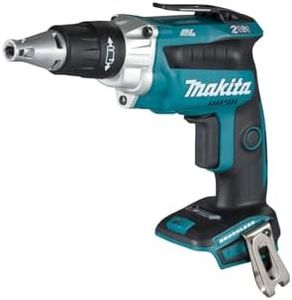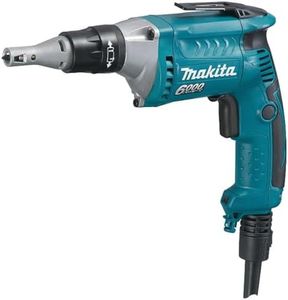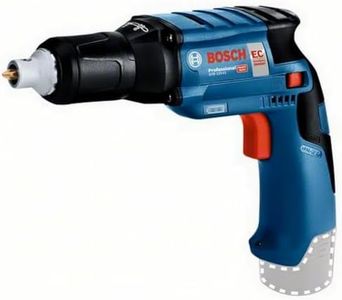We Use CookiesWe use cookies to enhance the security, performance,
functionality and for analytical and promotional activities. By continuing to browse this site you
are agreeing to our privacy policy
10 Best Drywall Screw Guns
From leading brands and best sellers available on the web.Buying Guide for the Best Drywall Screw Guns
Choosing the right drywall screw gun makes installing drywall much faster and easier. A good screw gun will help you drive screws quickly, consistently, and flush with the drywall surface, which is crucial for getting a professional finish and avoiding extra patchwork later. Think about how much drywall you’ll be installing and where you’ll use the tool – those factors will help steer you toward the ideal screw gun for your needs. Understanding a few key features will make your choice much more straightforward.Power Source (Corded vs. Cordless)The power source determines how your screw gun is powered. Corded models plug into a wall outlet and provide continuous, consistent power, making them a popular choice for long jobs without worrying about battery life. Cordless models use rechargeable batteries, giving you flexibility and portability, especially useful in tight or remote spaces. If you're often near outlets and working for long periods, corded might be better for you. If you need to move around freely or work in places without electricity, cordless is the way to go.
Speed (RPM)Speed is measured in revolutions per minute (RPM) and tells you how fast the screw gun's bit spins. Higher speeds (around 4,000-5,000 RPM) are best for driving drywall screws quickly into soft materials, which boosts productivity on big projects. Lower speeds (around 2,000-3,000 RPM) offer more control if you're new to using a screw gun or working with tougher materials. For most home projects, a medium speed range gives a balance between efficiency and control. If you’re working on massive jobs, higher speed might save you time.
Depth ControlDepth control is a function that lets you set how far the screw head is driven below the drywall surface. Good depth control ensures screws are neither sticking out nor sunk too deep, which prevents damage to drywall and keeps finishes even. Some screw guns have dial or nose-piece adjustment, making it simple to set the right depth. If you’re aiming for a smooth wall ready to paint or finish, look for adjustable depth control so you can adapt to different drywall thicknesses and personal preferences.
Motor Type (Brushed vs. Brushless)The motor can be brushed or brushless. Brushless motors are more efficient, provide longer tool life, and need less maintenance, as they create less heat and friction. Brushed motors are typically more affordable and perfectly suitable for occasional use. If you plan to use the screw gun frequently or for big projects, a brushless motor is worth considering for its durability and efficiency. For occasional home repairs, a brushed motor will get the job done.
Automatic Feed SystemSome drywall screw guns have an automatic feed system that allows you to load a strip of screws instead of manually placing each one. This feature speeds up the process significantly, making it great for large-scale installations. However, it adds weight and can make the tool bulkier. If you do a lot of repetitive screwing, like in new builds or renovations, an automatic feed can save you a lot of time and effort. For small projects or infrequent use, manual feed is often simpler and less cumbersome.
Ergonomics and WeightComfort and ease of use are shaped by how heavy the tool is and how it feels in your hand. Lighter tools reduce fatigue during long jobs, and a comfortable grip helps prevent hand strain. Consider how long you'll be holding the gun at a time and whether you'll work overhead or in awkward positions. Test a few models if possible to see what feels best in your hand before choosing, especially if you expect to use the tool for extended periods.
